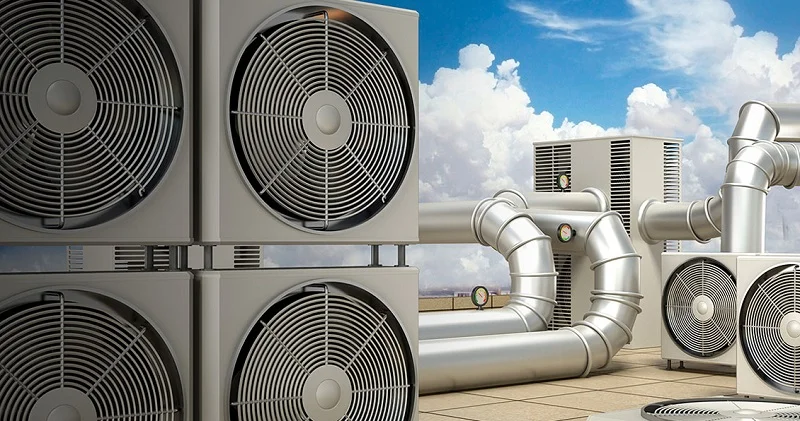In modern heating, ventilation, and air conditioning (HVAC) systems, efficiency and longevity are critical for maintaining performance, energy savings, and cost-effectiveness. One material that plays a vital role in ensuring these objectives is stainless steel, especially 309 stainless steel pipe. Known for its high resistance to heat and corrosion, 309 stainless steel pipe has emerged as a top choice for demanding HVAC applications.
This blog delves into how 309 stainless steel pipe enhances HVAC system durability, the specific benefits it offers, and why engineers and facility managers continue to prefer it for both residential and industrial HVAC infrastructure.
Why Material Selection Matters in HVAC Systems
HVAC systems operate under a wide range of temperature conditions and are exposed to moisture, chemicals, and varying pressures. The components, particularly piping, must withstand these elements to ensure smooth operation over long periods.
When inferior materials are used, it leads to corrosion, leakage, heat loss, and eventually system failure. Therefore, selecting the right pipe material is essential for minimizing maintenance, maximizing lifespan, and maintaining system efficiency.
What is 309 Stainless Steel Pipe?
309 stainless steel is an austenitic chromium-nickel stainless steel known for its superior oxidation resistance and strength at high temperatures. Compared to more commonly used grades like 304 or 316, 309 stainless steel pipe offers enhanced resistance to:
- High-temperature oxidation
- Thermal fatigue
- Corrosive environments
- Stress corrosion cracking
These qualities make 309 stainless steel pipe particularly suitable for heat-intensive HVAC systems and environments that require enhanced durability.
Key Advantages of Using 309 Stainless Steel Pipe in HVAC Systems
1. Superior Corrosion Resistance
HVAC systems are prone to moisture build-up, which can lead to corrosion in standard metal pipes. 309 stainless steel pipe resists oxidation and corrosion even in high-humidity environments. Its high chromium and nickel content ensures a passive layer forms on the surface, protecting it from rust and chemical attacks.
This corrosion resistance is especially beneficial in coastal installations, chemical plants, or commercial buildings where air quality and moisture can be harsh on metallic components.
2. High Temperature Endurance
HVAC systems often operate at varying temperatures, especially those involved in heating. 309 stainless steel pipe can withstand continuous service temperatures of up to 1,000°C (1,832°F). This makes it ideal for heat exchangers, ducts, and furnace components where heat resistance is crucial.
Its thermal stability helps maintain structural integrity even after repeated heating and cooling cycles, reducing the risk of cracks or deformation.
3. Longevity and Low Maintenance
Because of its corrosion and heat resistance, 309 stainless steel pipe contributes to an extended service life of HVAC systems. This reduces the frequency of replacements, downtime, and maintenance costs.
Unlike galvanized or copper pipes that may require periodic checks and replacements due to corrosion or scaling, 309 stainless steel requires minimal intervention over its life cycle.
4. Strength and Structural Stability
309 stainless steel pipe maintains its mechanical strength even under high-pressure and high-temperature conditions. Its tensile strength makes it a dependable choice for HVAC systems in large industrial complexes, hospitals, and data centers where reliability is non-negotiable.
Moreover, its structural integrity reduces the risk of pipe bursts, warping, or collapse, even under stress from thermal expansion and pressure changes.
5. Ease of Fabrication and Installation
Another benefit of 309 stainless steel pipe is its workability. It can be easily cut, welded, and fabricated into various configurations to fit complex HVAC designs. This flexibility allows for efficient custom installations while ensuring durability and performance.
Its compatibility with a range of fittings and valves also simplifies the integration process in both new systems and retrofitting projects.
6. Environmental and Health Safety
HVAC systems must comply with stringent safety and environmental standards, especially in hospitals, laboratories, and food processing units. 309 stainless steel pipe is non-toxic, corrosion-resistant, and does not leach harmful substances. Its smooth surface discourages microbial growth and biofilm formation, which helps maintain indoor air quality and hygienic operation.
Applications of 309 Stainless Steel Pipe in HVAC Systems
Thanks to its advanced properties, 309 stainless steel pipe is used in various HVAC components, such as:
- Heat exchangers
- Furnace flues and vents
- High-temperature ductwork
- Steam and hot water lines
- Combustion chambers
- Exhaust systems
Whether in large-scale industrial plants or high-efficiency residential units, the role of 309 stainless steel in HVAC systems is indispensable for safety and reliability.
Comparing 309 Stainless Steel Pipe with Other Materials
| Property | 309 Stainless Steel | 304 Stainless Steel | Copper Pipe | Galvanized Pipe |
| Corrosion Resistance | Excellent | Good | Fair | Poor |
| High-Temperature Resistance | Excellent | Moderate | Low | Low |
| Maintenance | Low | Low | High | High |
| Lifespan | 20+ years | 10–15 years | 5–10 years | 5–10 years |
| Cost | Higher | Moderate | Moderate | Low |
Though 309 stainless steel pipe may involve a higher initial cost, its long-term advantages in system integrity and maintenance savings often justify the investment.
Final Thoughts
In the evolving landscape of HVAC system design and operation, durability is no longer optional—it’s essential. The use of 309 stainless steel pipe offers a smart, long-term solution for ensuring HVAC systems are efficient, corrosion-resistant, and capable of withstanding harsh conditions.
By choosing materials that combine longevity, safety, and structural resilience, engineers and facility managers can deliver systems that perform reliably and sustainably for decades. Whether it’s a new installation or an upgrade to an aging system, incorporating 309 stainless steel pipe is a strategic investment in performance and peace of mind.



